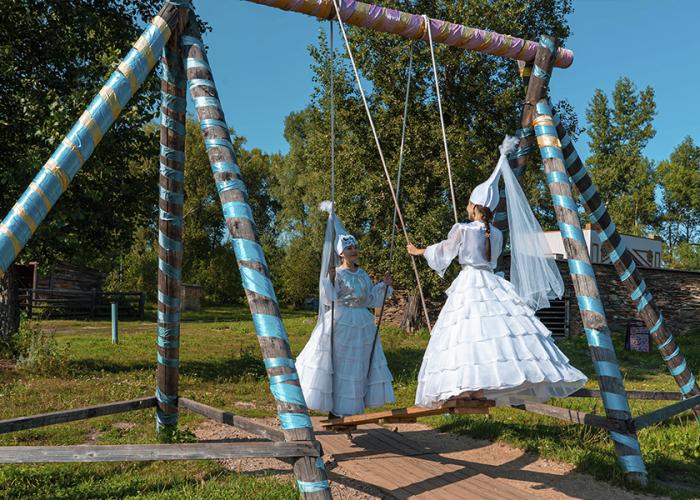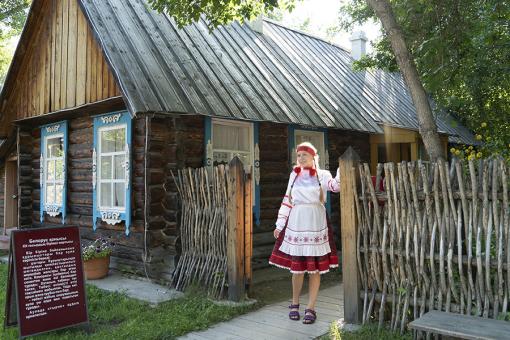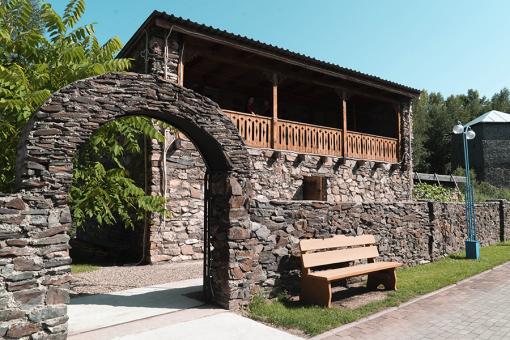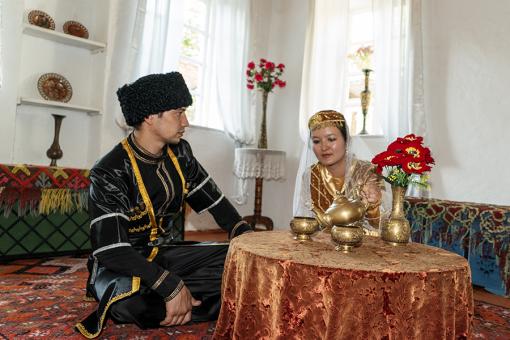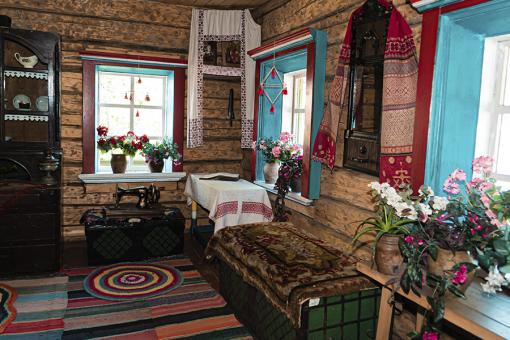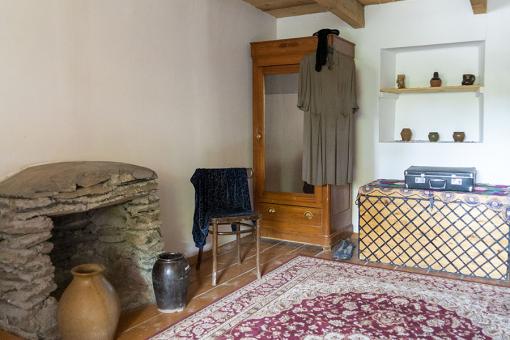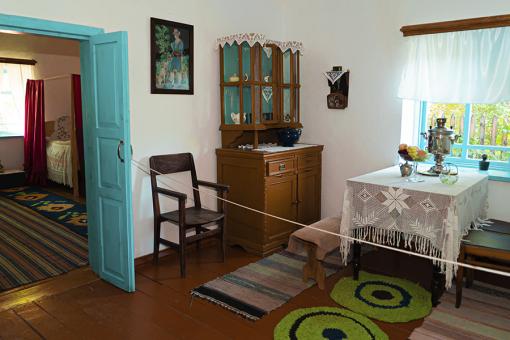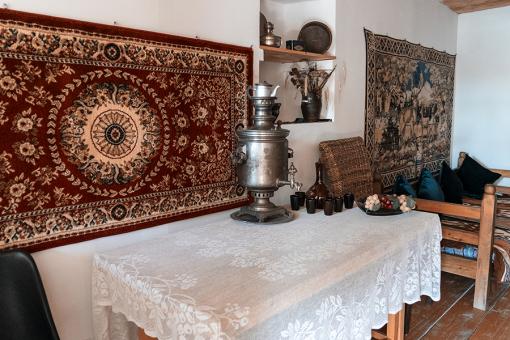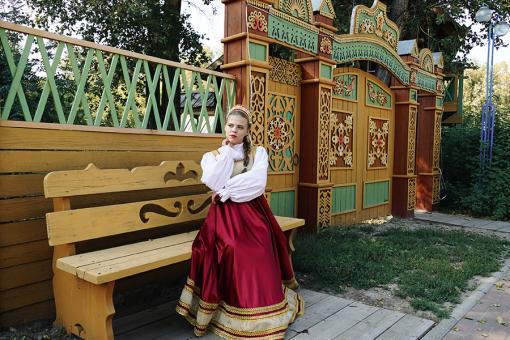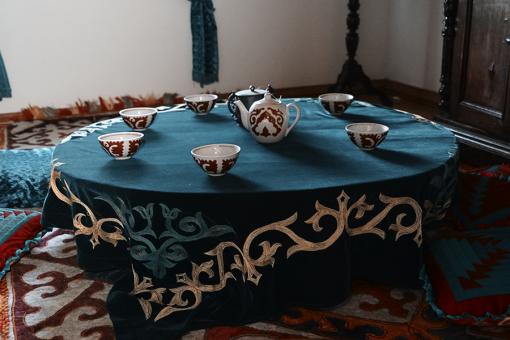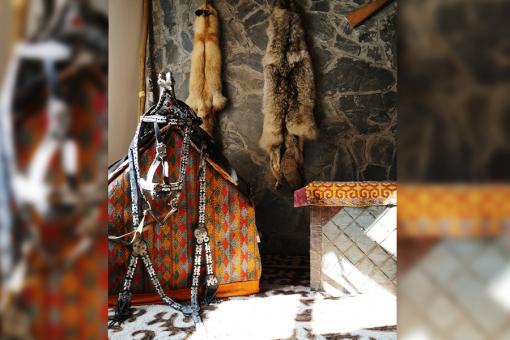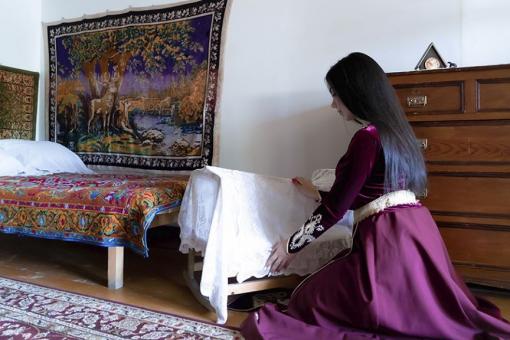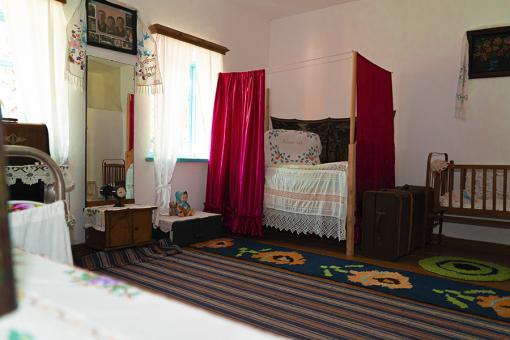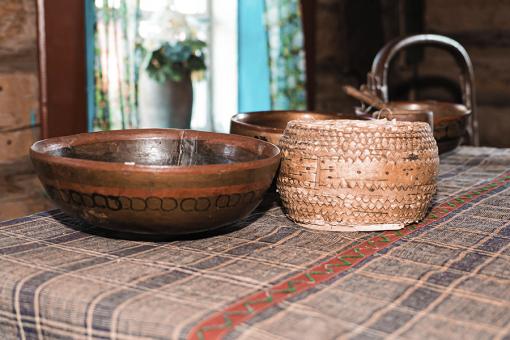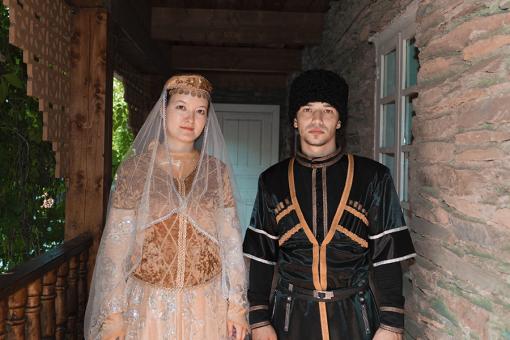The ethno-village was erected in the left-bank complex in 2010 by enthusiastic local historians in just 28 days. The total area of the reserve is 10 hectares.
The purpose of the ethno-village is to show everyday life, traditions, rituals and customs.
On the territory of the ethno-village there are estates of different peoples who lived in the Eastern Kazakhstan in the late XIX and mid-twentieth centuries. Architects have tried to preserve and convey the atmosphere of the time, typical of each people. In addition to Kazakh yurts and Russian izba here you can see Tatar, Uighur, Ukrainian, Polish, Korean, German, Azerbaijani, Chechen and other farmsteads.
Guests can enter the courtyard of the manor house and the house. Many of the furnishings - furniture, carpets, curtains and even clothes - are relics, preserved from the last century.
The central place in the ethno village is occupied by a large white yurt that serves as a kind of a conference hall for large events. A little further away you can see a stone toshala, one of the oldest types of housing for sedentary Kazakhs. Russian two-story farmstead of an Old Believer peasant of the XX century is popular among visitors to the village - there is something to see inside. By the way, for the interior decoration of all objects of the village are used real museum exhibits, long kept in the funds of the Ethnographic Museum.
Korean, German, Tatar, Belarusian, Azerbaijani, Armenian, Uyghur, Polish farmsteads, Ukrainian hut, Jewish house, Chechen residential tower. All buildings have a unique flavor, each of them can be viewed for a long time inside and outside.
Each year on the unusual street appear new interesting objects.

